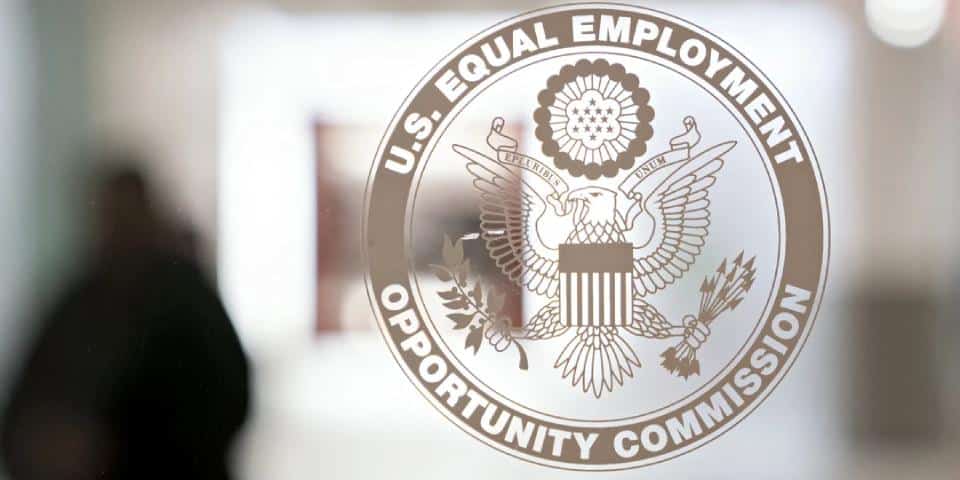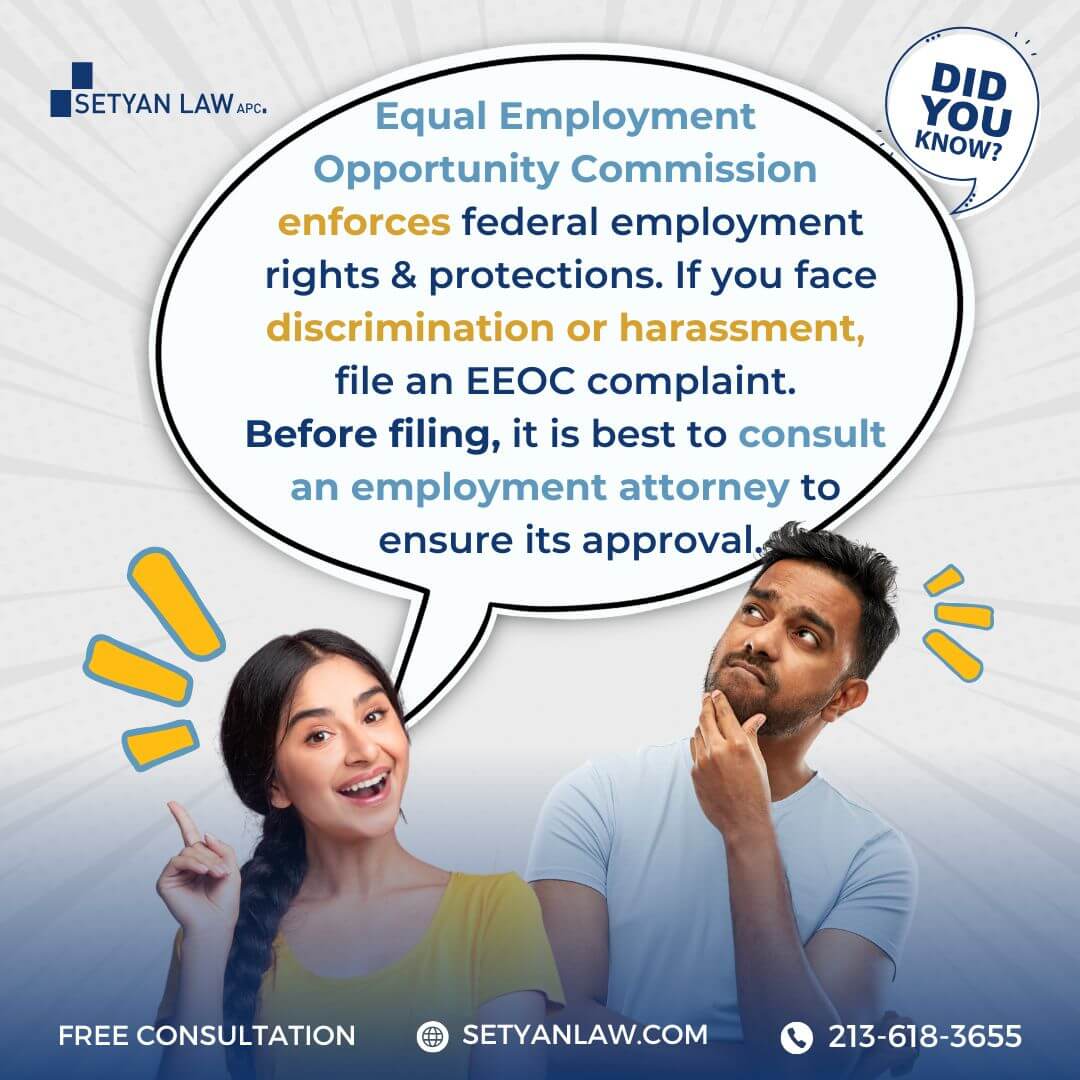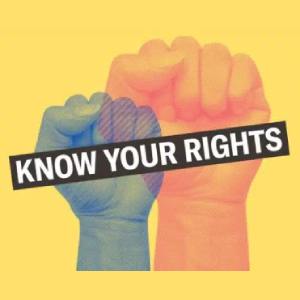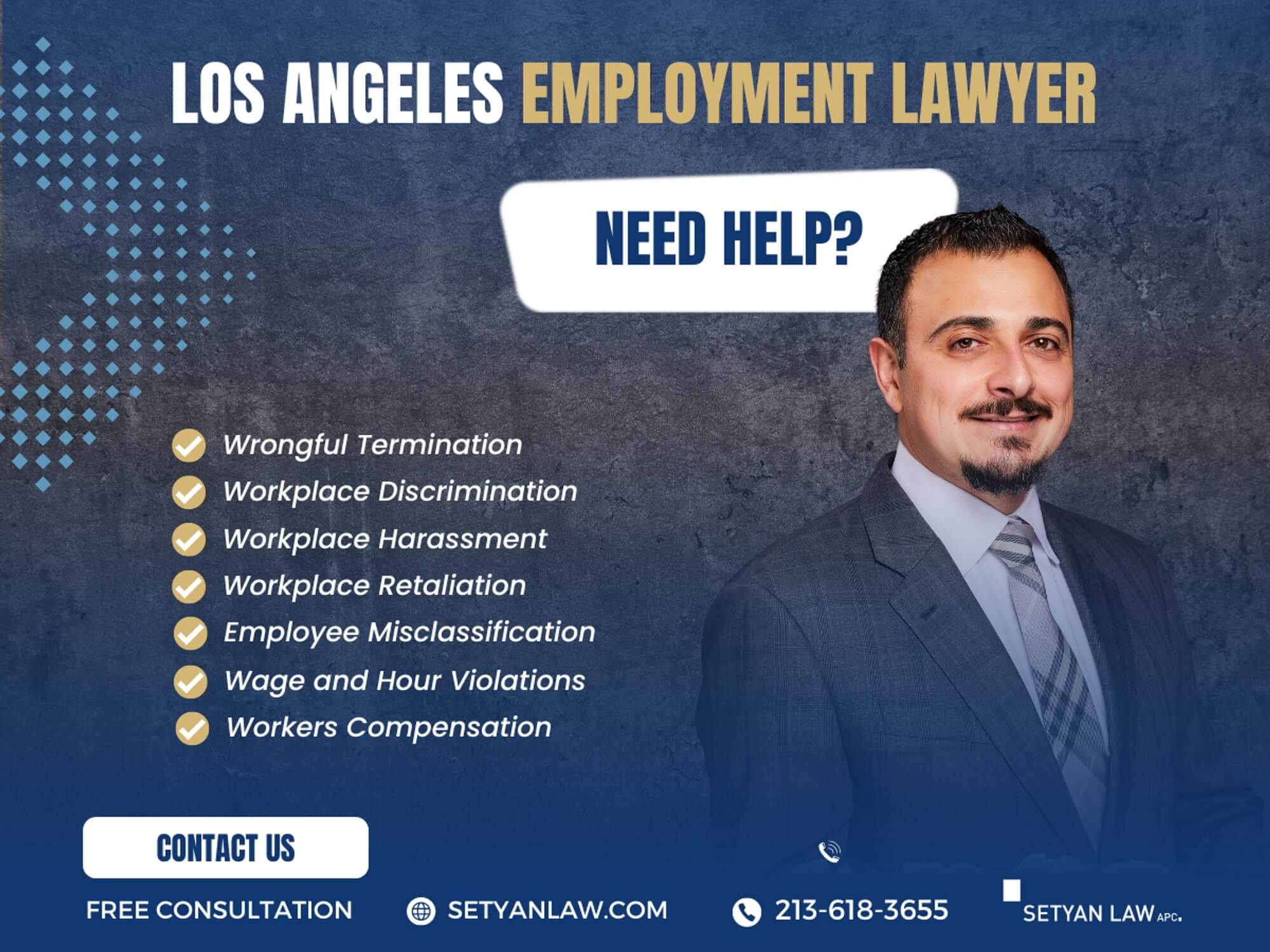Updated September 11, 2025
Understanding the Equal Employment Opportunity Commission (EEOC)
The Equal Employment Opportunity Commission, commonly known as the EEOC, stands as a pivotal federal agency in the United States, dedicated to safeguarding workplace fairness and equality. Established in 1965, this organization plays a crucial role in enforcing federal laws that prohibit discrimination in employment. The EEOC’s mission encompasses a wide range of responsibilities, from investigating discrimination complaints to providing guidance on equal employment practices.
At its core, the EEOC serves as a watchdog for fair employment practices across the nation. It operates under the principle that every individual, regardless of their background, deserves an equal opportunity in the workplace. This commitment to equality extends to various aspects of employment, including hiring, promotions, wages, and working conditions. The agency’s work touches the lives of millions of American workers, ensuring that their rights are protected and that workplaces adhere to federal anti-discrimination laws.
The scope of the EEOC’s authority is broad, covering most employers with 15 or more employees, as well as labor unions and employment agencies. This wide-reaching jurisdiction allows the EEOC to have a significant impact on employment practices across various industries and sectors. By setting and enforcing standards for equal employment opportunity, the EEOC plays a vital role in shaping the American workplace landscape.
California Workers Only: (213)-618-3655 to schedule a free consultation.
One of the key functions of the EEOC is to receive and investigate charges of discrimination filed by individuals who believe they have been unfairly treated in the workplace. These charges can cover a range of issues, from racial discrimination to sexual harassment, age discrimination, and disability-related unfair treatment. The EEOC’s investigative process is thorough, aimed at uncovering the facts and determining whether discrimination has occurred.
Beyond its investigative role, the EEOC also serves as an educational resource for both employers and employees. The agency provides guidance on compliance with anti-discrimination laws, offers training programs, and publishes informational materials to help prevent discrimination before it occurs. This proactive approach is crucial in fostering workplace environments that are inclusive and respectful of diversity.
In cases where discrimination is found, the EEOC has the authority to file lawsuits against employers on behalf of affected individuals. While litigation is not always the first course of action, it remains a powerful tool in the EEOC’s arsenal for enforcing compliance with federal laws. The agency’s legal actions often lead to significant changes in workplace policies and practices, benefiting not just the individuals involved but entire workforce communities.
The EEOC’s work extends beyond the private sector. It also plays a crucial role in ensuring equal employment opportunity within the federal government. The agency provides oversight and guidance to federal agencies on their EEO programs, reviews and approves affirmative action plans, and adjudicates discrimination complaints filed by federal employees.
As workplace dynamics continue to evolve, so does the role of the EEOC. The agency adapts its strategies and focus areas to address emerging issues in employment discrimination. This includes tackling new forms of discrimination that may arise with changing societal norms and technological advancements in the workplace.
Understanding the EEOC is essential for both employers and employees. For employers, it provides a framework for creating and maintaining fair and inclusive workplaces. For employees, knowledge of the EEOC and its functions empowers them to recognize and address discrimination when it occurs. The agency’s work contributes significantly to the ongoing effort to create workplaces where every individual has an equal opportunity to succeed based on their merits and abilities.
The Historical Context and Evolution of the EEOC
California Workers: Call Setyan Law at (213)-618-3655 to schedule a free consultation.
The Equal Employment Opportunity Commission’s inception is deeply rooted in the civil rights movement of the 1960s. This era marked a turning point in American history, characterized by a growing demand for equality and justice across all sectors of society, including the workplace. The EEOC was established as a direct result of the Civil Rights Act of 1964, specifically Title VII of this landmark legislation. This act was a watershed moment in the fight against discrimination, and the EEOC was created to ensure its effective implementation in the employment sphere.
When the EEOC opened its doors on July 2, 1965, it faced a monumental task. The American workplace was rife with discriminatory practices, many of which were deeply ingrained and considered normal at the time. The agency’s initial focus was on addressing racial and gender discrimination, which were pervasive issues in employment. However, the scope of the EEOC’s work has expanded significantly over the decades, mirroring the evolving understanding of equality and discrimination in society.
In its early years, the EEOC faced numerous challenges. It had limited enforcement powers and relied heavily on voluntary compliance from employers. Despite these limitations, the agency played a crucial role in shaping workplace policies and practices. It began by establishing guidelines for employers on how to comply with anti-discrimination laws and investigating complaints of discrimination.
The 1970s saw a significant expansion of the EEOC’s authority and responsibilities. In 1972, the Equal Employment Opportunity Act gave the agency the power to file lawsuits against private employers, a crucial tool in enforcing anti-discrimination laws. This decade also saw the EEOC taking on age discrimination with the enforcement of the Age Discrimination in Employment Act of 1967.
As the understanding of workplace discrimination evolved, so did the EEOC’s focus areas. The 1990s brought new challenges and responsibilities with the passage of the Americans with Disabilities Act (ADA) in 1990. This landmark legislation expanded the EEOC’s mandate to include protecting individuals with disabilities from workplace discrimination. The agency took on the task of educating employers about the ADA and enforcing its provisions, marking a significant expansion of its role in promoting workplace equality.
The turn of the millennium saw the EEOC adapting to new forms of discrimination and workplace issues. The agency began addressing emerging concerns such as genetic discrimination, leading to its enforcement of the Genetic Information Nondiscrimination Act of 2008. Additionally, the EEOC has taken steps to address discrimination based on sexual orientation and gender identity, reflecting changing societal norms and legal interpretations.
In recent years, the EEOC has faced the challenge of addressing discrimination in an increasingly digital workplace. Issues such as online harassment, discriminatory hiring algorithms, and privacy concerns in the age of big data have become part of the agency’s purview. The EEOC has had to adapt its strategies and guidelines to address these new frontiers in workplace discrimination.
Throughout its history, the EEOC has not only reacted to discrimination but has also played a proactive role in shaping workplace culture. Through its guidelines, training programs, and public education efforts, the agency has contributed to a gradual shift in how employers and employees view workplace equality and diversity. The EEOC’s work has helped to normalize concepts like reasonable accommodation for disabilities and zero tolerance for sexual harassment, which were once controversial or overlooked issues.
The evolution of the EEOC reflects the broader changes in American society’s approach to equality and discrimination. From its origins in the civil rights era to its current role addressing complex and nuanced forms of workplace discrimination, the EEOC has remained at the forefront of efforts to create fair and inclusive workplaces. Its history is a testament to the ongoing struggle for equality in the American workplace and the importance of having a dedicated federal agency to enforce and promote these principles.
Key Laws Enforced by the EEOC
The Equal Employment Opportunity Commission is responsible for enforcing a comprehensive set of federal laws that prohibit workplace discrimination. These laws form the backbone of equal employment opportunity in the United States, covering a wide range of protected characteristics and employment practices. Understanding these key laws is crucial for both employers and employees to ensure compliance and protect individual rights in the workplace.
Title VII of the Civil Rights Act of 1964
Title VII is the cornerstone of anti-discrimination law in employment. It prohibits discrimination based on race, color, religion, sex, and national origin. This law applies to all aspects of employment, including hiring, firing, promotion, wages, and benefits. Title VII also prohibits harassment based on these protected characteristics and protects employees from retaliation for filing a discrimination charge or participating in an investigation.
Key aspects of Title VII include:
- Coverage of employers with 15 or more employees
- Prohibition of both intentional discrimination and practices that have a discriminatory impact
- Requirement for employers to reasonably accommodate employees’ religious practices
- Protection against sexual harassment as a form of sex discrimination
The Age Discrimination in Employment Act (ADEA) of 1967
The ADEA protects individuals who are 40 years of age or older from discrimination in employment. This law prohibits age discrimination in hiring, promotion, discharge, compensation, or terms, conditions, or privileges of employment. The ADEA applies to employers with 20 or more employees, including state and local governments.
Important features of the ADEA include:
- Protection against both intentional discrimination and policies that have a disproportionate impact on older workers
- Prohibition of mandatory retirement ages in most sectors
- Allowance for certain bona fide occupational qualifications based on age
The Americans with Disabilities Act (ADA) of 1990
The ADA prohibits discrimination against qualified individuals with disabilities in job application procedures, hiring, firing, advancement, compensation, job training, and other terms, conditions, and privileges of employment. It applies to employers with 15 or more employees.
Key provisions of the ADA include:
- Requirement for employers to provide reasonable accommodations to qualified employees with disabilities
- Protection of individuals who have a relationship or association with a person with a disability
- Prohibition of discrimination based on perceived disability, even if the individual does not actually have a disability
The Equal Pay Act of 1963
This law mandates that men and women in the same workplace be given equal pay for equal work. The jobs need not be identical, but they must be substantially equal in terms of skill, effort, and responsibility, and performed under similar working conditions.
Important aspects of the Equal Pay Act include:
- Application to all forms of pay, including salary, overtime pay, bonuses, stock options, profit sharing, and other benefits
- Allowance for pay differentials based on seniority, merit, quantity or quality of production, or factors other than sex
The Genetic Information Nondiscrimination Act (GINA) of 2008
GINA prohibits discrimination against employees or applicants because of genetic information. This includes information about an individual’s genetic tests and the genetic tests of family members, as well as information about any disease, disorder, or condition of an individual’s family members.
Key elements of GINA include:
- Prohibition on the use of genetic information in employment decisions
- Restrictions on employers acquiring genetic information about employees or their family members
- Requirements for maintaining the confidentiality of genetic information
The Pregnancy Discrimination Act of 1978
This act amended Title VII to prohibit discrimination on the basis of pregnancy, childbirth, or related medical conditions. It requires that women affected by pregnancy or related conditions be treated the same as other applicants or employees with similar abilities or limitations.
Important features include:
- Protection of women from being fired, denied a job, or denied a promotion because of pregnancy
- Requirement for employers to provide the same level of benefits for pregnancy and related medical conditions as they do for other medical conditions
The Lilly Ledbetter Fair Pay Act of 2009
This act amended the Civil Rights Act of 1964 to clarify that discriminatory compensation decisions or other practices that occur in the past can lead to actionable claims each time an employee receives a paycheck affected by the past discrimination.
Key aspects include:
- Extension of the statute of limitations for filing an equal-pay lawsuit
- Allowance for employees to challenge ongoing pay discrimination
These laws, enforced by the EEOC, collectively create a comprehensive framework for protecting employees from various forms of workplace discrimination. They reflect the evolving understanding of equality and fairness in employment and provide the legal basis for the EEOC’s work in promoting and enforcing equal opportunity in the workplace. Understanding these laws is essential for both employers in maintaining compliant and fair workplaces, and for employees in recognizing and asserting their rights.
The EEOC’s Investigative Process
The Equal Employment Opportunity Commission’s investigative process is a crucial component of its role in enforcing anti-discrimination laws. This process is designed to be thorough, impartial, and effective in addressing allegations of workplace discrimination. Understanding this process is important for both employees who may need to file a complaint and employers who may be subject to an investigation.
Initiation of the Investigation
The investigative process typically begins when an individual files a charge of discrimination with the EEOC. This charge must be filed within 180 days of the alleged discriminatory act, although this deadline can be extended to 300 days in certain circumstances, such as when there are state or local laws that also prohibit employment discrimination.
Key points about filing a charge:
- Charges can be filed in person at an EEOC office, by mail, or online through the EEOC’s public portal
- The charge should include basic information about the alleged discrimination, including dates, names of individuals involved, and a brief description of the discriminatory acts
- The EEOC does not require legal representation to file a charge, although individuals may choose to have an attorney assist them
Notification and Response
Once a charge is filed, the EEOC notifies the employer within 10 days. This notification includes basic information about the charge and the agency’s procedures.
The employer’s response may involve:
- Participating in the EEOC’s mediation program to resolve the dispute
- Submitting a position statement that explains their side of the story
- Providing additional information or documents requested by the EEOC investigator
Investigation Methods
The EEOC employs various methods to investigate charges of discrimination. These may include:
Document Review: Examining relevant company policies, personnel files, and other documents related to the charge.
Interviews: Conducting interviews with the charging party, witnesses, and company representatives.
On-Site Visits: In some cases, investigators may visit the workplace to gather information and observe the work environment.
Data Analysis: Analyzing employment data to identify patterns of discrimination.
Requests for Information: Sending formal requests to the employer for specific information or documents relevant to the investigation.
Duration of the Investigation
The length of an EEOC investigation can vary significantly depending on the complexity of the case, the cooperation of the parties involved, and the agency’s workload. Typically, investigations can take several months to over a year to complete.
Factors affecting investigation duration:
- The nature and complexity of the allegations
- The number of witnesses and amount of evidence to be reviewed
- The workload and resources of the EEOC office handling the case
Confidentiality and Retaliation Protection
Throughout the investigative process, the EEOC maintains strict confidentiality. The agency is prohibited from disclosing information about charges to the public. Additionally, it is illegal for an employer to retaliate against an individual for filing a charge, participating in an investigation, or opposing discriminatory practices.
Key confidentiality and protection measures:
- The identity of individuals who file charges is kept confidential to the extent possible
- Witnesses are protected from retaliation for participating in EEOC investigations
- The EEOC takes allegations of retaliation seriously and can investigate these as separate charges
Determination and Resolution
After completing the investigation, the EEOC makes a determination on the merits of the charge. This determination can take several forms:
No Reasonable Cause: If the EEOC finds insufficient evidence to support the charge, it issues a Dismissal and Notice of Rights, informing the charging party of their right to file a lawsuit in federal court within 90 days.
Reasonable Cause: If the EEOC finds evidence supporting the charge, it issues a Letter of Determination and attempts to resolve the charge through conciliation.
Conciliation: This is a voluntary process where the EEOC works with both parties to develop a mutually agreeable solution to address the discrimination.
Litigation: If conciliation fails, the EEOC may decide to file a lawsuit on behalf of the charging party or may issue a Notice of Right to Sue, allowing the individual to file their own lawsuit.
Post-Investigation Actions
Regardless of the outcome, both parties have options following the EEOC’s determination:
- The charging party can request a review of a no cause determination
- Either party can file a lawsuit in federal court if they disagree with the EEOC’s findings
- The EEOC may continue to monitor the situation even after a case is closed, especially if systemic issues were identified
The EEOC’s investigative process is designed to be fair and thorough, providing both the charging party and the employer opportunities to present their cases. While the process can be lengthy and complex, it plays a vital role in enforcing anti-discrimination laws and promoting equal opportunity in the workplace. Understanding this process helps both employees and employers navigate EEOC investigations effectively and contributes to the overall goal of creating fair and inclusive work environments.
California Workers: It’s always best to consult a qualified Employment Attorney regarding your EEOC complaint before you file. Employment law has many pitfalls and an attorney can help you navigate past them safely. Sam Setyan will review your grievance, tell you your options, and guide you to the most favorable outcome possible. It’s your call.
Call 213-618-3655 for a free consultation.
EEOC’s Role in Mediation and Conciliation
The Equal Employment Opportunity Commission (EEOC) plays a crucial role in resolving workplace discrimination disputes through alternative dispute resolution methods, primarily mediation and conciliation. These processes are designed to provide efficient, cost-effective, and mutually satisfactory resolutions to discrimination charges without resorting to lengthy and often costly litigation. Understanding the EEOC’s approach to mediation and conciliation is essential for both employers and employees involved in discrimination complaints.
Mediation Process
Mediation is a voluntary, informal, and confidential way to resolve disputes with the help of a neutral mediator. The EEOC offers mediation as an alternative to the traditional investigative process, typically early in the charge process.
Key aspects of EEOC mediation include:
Voluntary Participation: Both parties must agree to participate in mediation. Either party can opt out at any time.
Timing: Mediation is usually offered early in the process, often before the employer has provided a formal response to the charge.
Neutral Mediator: The EEOC provides a trained mediator who does not take sides or make decisions but helps facilitate communication between the parties.
Confidentiality: The mediation process is confidential. Information disclosed during mediation cannot be used in subsequent investigations or lawsuits if mediation is unsuccessful.
Flexibility: Mediation allows for creative solutions that may not be available through the formal investigative process or litigation.
Speed: Mediation can often resolve disputes much faster than traditional investigation or litigation.
Cost-Effectiveness: Mediation is free to both parties and can save significant costs associated with prolonged investigations or lawsuits.
Preservation of Relationships: The collaborative nature of mediation can help preserve working relationships, which is particularly valuable when the employee remains with the company.
Conciliation Process
Conciliation is a process that occurs after the EEOC has completed its investigation and found reasonable cause to believe that discrimination has occurred. It is the EEOC’s last effort to resolve a charge before considering litigation.
Important features of the conciliation process include:
Mandatory Attempt: The EEOC is required by law to attempt conciliation before filing a lawsuit.
Voluntary Participation: While the EEOC must attempt conciliation, participation by the employer is voluntary.
EEOC Involvement: Unlike in mediation, the EEOC takes a more active role in conciliation, advocating for remedies it believes are necessary to address the discrimination.
Scope of Resolution: Conciliation agreements often address both individual relief for the charging party and broader remedial measures to prevent future discrimination.
Confidentiality: Like mediation, the conciliation process is confidential.
Binding Agreement: If successful, conciliation results in a binding agreement between the parties and the EEOC.
Failure to Conciliate: If conciliation fails, the EEOC may decide to file a lawsuit or issue a right-to-sue notice to the charging party.
Benefits of EEOC-Facilitated Resolution
The EEOC’s mediation and conciliation processes offer several advantages:
Efficiency: These processes can resolve disputes much faster than investigations or litigation.
Cost Savings: Both parties can avoid the high costs associated with prolonged legal proceedings.
Control Over Outcome: Parties have more control over the resolution compared to a court-imposed decision.
Flexibility in Solutions: These processes allow for creative and tailored solutions that address the specific needs of both parties.
Confidentiality: The private nature of these processes can protect the reputations of both employers and employees.
Improved Communication: Mediation and conciliation can open channels of communication that might have been closed, potentially improving workplace relationships.
Education and Prevention: The process can educate employers about discriminatory practices, potentially preventing future issues.
Challenges and Considerations
While mediation and conciliation offer many benefits, there are also challenges to consider:
Power Imbalances: There may be perceived or real power imbalances between employees and employers that can affect the process.
Complex Cases: Some discrimination cases may be too complex or involve systemic issues that are not suitable for mediation.
Timing Concerns: Early mediation might occur before all facts are known, potentially disadvantaging one party.
Enforcement: While conciliation agreements are binding, enforcement may require additional legal action if a party fails to comply.
EEOC’s Approach to Successful Resolution
The EEOC has developed strategies to enhance the effectiveness of its mediation and conciliation processes:
Trained Mediators: The EEOC uses skilled mediators who are trained in both mediation techniques and employment discrimination law.
Educating Parties: The EEOC provides information to both parties about the benefits and processes of mediation and conciliation.
Systemic Approach: In conciliation, the EEOC often seeks remedies that address not just individual cases but also prevent future discrimination.
Monitoring and Evaluation: The EEOC regularly evaluates its mediation and conciliation programs to improve their effectiveness.
Flexibility in Scheduling: The EEOC offers flexibility in scheduling mediation sessions to accommodate the needs of both parties.
The EEOC’s role in mediation and conciliation is a critical component of its mission to prevent and remedy unlawful employment discrimination. These processes offer valuable alternatives to traditional investigation and litigation, providing opportunities for more efficient, cost-effective, and mutually satisfactory resolutions to workplace discrimination charges. By facilitating dialogue and negotiation between parties, the EEOC not only helps resolve individual cases but also contributes to broader improvements in workplace practices and relationships. Understanding and utilizing these processes can be beneficial for both employers and employees in addressing and resolving discrimination complaints effectively.
EEOC’s Litigation Authority and Strategy
The Equal Employment Opportunity Commission’s authority to litigate employment discrimination cases is a powerful tool in enforcing federal anti-discrimination laws. This litigation authority allows the EEOC to take legal action against employers who violate these laws, serving not only to seek justice in individual cases but also to deter future violations and shape employment practices across the nation. Understanding the EEOC’s approach to litigation is crucial for both employers and employees in comprehending the potential consequences of discrimination and the agency’s role in enforcing workplace equality.
Scope of Litigation Authority
The EEOC’s litigation authority is broad and encompasses several key aspects:
Direct Litigation: The EEOC can file lawsuits directly against employers on behalf of individuals or groups of employees who have faced discrimination.
Intervention: The agency can intervene in private lawsuits that involve issues of general public importance.
Systemic Cases: The EEOC has the authority to pursue cases that address patterns or practices of discrimination affecting a large number of employees or applicants.
Amicus Curiae Briefs: The EEOC can file "friend of the court" briefs in cases that have significant implications for the interpretation of anti-discrimination laws.
Criteria for Pursuing Litigation
The EEOC does not litigate every case where discrimination is found. The agency uses specific criteria to determine which cases to pursue in court:
Strategic Significance: Cases that address emerging or novel issues in employment discrimination law.
Potential Impact: Lawsuits that could have a broad impact on employer practices or clarify important legal principles.
Severity of Violation: Cases involving egregious or flagrant violations of anti-discrimination laws.
Systemic Discrimination: Situations where discrimination affects a large group of employees or is part of a pattern or practice.
Public Interest: Cases that are of significant public interest or importance.
Resource Considerations: The EEOC must balance its limited resources against the potential benefits of litigation.
Litigation Process
When the EEOC decides to pursue litigation, the process typically involves several stages:
Pre-Suit Requirements: Before filing a lawsuit, the EEOC must have found reasonable cause to believe discrimination occurred and attempted conciliation.
Filing the Lawsuit: The EEOC files a complaint in federal court detailing the allegations of discrimination.
Discovery: Both parties engage in the exchange of information and evidence relevant to the case.
Settlement Negotiations: The EEOC may continue to seek a settlement throughout the litigation process.
Trial: If a settlement is not reached, the case proceeds to trial in federal court.
Appeals: Either party may appeal the court’s decision to a higher court.
Types of Cases Pursued
The EEOC pursues various types of discrimination cases, including but not limited to:
Hiring Discrimination: Cases involving discriminatory hiring practices.
Harassment: Sexual harassment and other forms of workplace harassment.
Retaliation: Actions against employees for engaging in protected activities like filing discrimination complaints.
Pay Discrimination: Cases involving unequal pay based on protected characteristics.
Disability Discrimination: Failure to provide reasonable accommodations or discriminating against individuals with disabilities.
Age Discrimination: Cases involving unfair treatment of workers aged 40 and older.
Systemic Discrimination: Large-scale cases affecting entire classes of employees or applicants.
Strategic Litigation Initiatives
The EEOC often focuses its litigation efforts on specific strategic initiatives:
Emerging Issues: Addressing new forms of discrimination, such as those related to genetic information or sexual orientation.
Vulnerable Workers: Focusing on industries or sectors where workers are particularly vulnerable to discrimination.
Underserved Communities: Targeting discrimination affecting underserved or marginalized communities.
Systemic Discrimination: Prioritizing cases that address widespread or institutional discrimination.
Clarifying the Law: Pursuing cases that can help clarify ambiguous areas of anti-discrimination law.
Impact of EEOC Litigation
EEOC litigation has several significant impacts:
Deterrence: High-profile cases serve as a deterrent to other employers, encouraging compliance with anti-discrimination laws.
Legal Precedents: EEOC cases often set important legal precedents that shape the interpretation of employment laws.
Policy Changes: Successful litigation often leads to changes in employer policies and practices.
Public Awareness: EEOC lawsuits raise public awareness about workplace discrimination and employee rights.
Compensation for Victims: Litigation can result in monetary relief and other remedies for victims of discrimination.
Challenges in EEOC Litigation
The EEOC faces several challenges in its litigation efforts:
Resource Constraints: Limited budget and staff can restrict the number of cases the EEOC can pursue.
Evolving Workplace Practices: Keeping up with rapidly changing workplace technologies and practices that may give rise to new forms of discrimination.
Complex Legal Issues: Many discrimination cases involve complex legal and factual issues that can be challenging to litigate.
Resistance from Employers: Some employers vigorously contest EEOC lawsuits, leading to prolonged and resource-intensive litigation.
Changing Legal Landscape: Shifts in court interpretations of anti-discrimination laws can affect the EEOC’s litigation strategies.
EEOC’s Approach to Settlements
While the EEOC is prepared to litigate cases fully, it also recognizes the value of settlements:
Consent Decrees: Many EEOC cases are resolved through consent decrees, which are court-approved agreements that often include both monetary relief and requirements for policy changes.
Monitoring: Settlements often include provisions for ongoing monitoring of the employer’s practices.
Training Requirements: Many settlements require employers to conduct anti-discrimination training for employees and managers.
Systemic Relief: In cases of systemic discrimination, settlements may include broad remedial measures affecting large groups of employees.
The EEOC’s litigation authority is a crucial component of its enforcement strategy. Through strategic selection of cases and effective litigation, the EEOC not only seeks justice for individuals who have faced discrimination but also works to create broader changes in employment practices. The agency’s litigation efforts serve to interpret and clarify anti-discrimination laws, deter future violations, and promote equal opportunity in workplaces across the nation. For employers, understanding the EEOC’s litigation approach underscores the importance of proactive compliance with anti-discrimination laws. For employees, it reinforces the protections available and the EEOC’s role as an advocate for workplace equality.
EEOC’s Role in Shaping Workplace Policies
The Equal Employment Opportunity Commission plays a pivotal role in shaping workplace policies across the United States. Beyond its enforcement and litigation functions, the EEOC significantly influences how employers develop and implement policies related to equal employment opportunity, non-discrimination, and diversity. This aspect of the EEOC’s work is crucial in preventing discrimination and promoting inclusive workplaces proactively, rather than merely responding to violations after they occur.
Policy Guidance and Best Practices
One of the primary ways the EEOC shapes workplace policies is through the issuance of policy guidance and best practice recommendations:
Formal Guidance: The EEOC regularly issues formal guidance documents that interpret anti-discrimination laws and provide direction on compliance.
Technical Assistance: The agency offers technical assistance to employers, helping them understand how to implement effective anti-discrimination policies.
Best Practice Guidelines: The EEOC develops and disseminates best practice guidelines on various topics related to equal employment opportunity.
Q&A Documents: The agency publishes Q&A documents addressing common questions about specific aspects of employment law and policy implementation.
Impact on Specific Policy Areas
The EEOC’s influence extends to various specific policy areas within the workplace:
Harassment Prevention: The EEOC has been instrumental in shaping anti-harassment policies, particularly in the wake of the #MeToo movement.
Reasonable Accommodation: Guidelines on accommodating employees with disabilities have significantly influenced how employers approach this issue.
Hiring Practices: EEOC guidance on non-discriminatory hiring practices has led many employers to revise their recruitment and selection processes.
Diversity and Inclusion: While not directly enforcing diversity quotas, the EEOC’s work has encouraged many employers to develop robust diversity and inclusion initiatives.
Leave Policies: EEOC interpretations have influenced how employers structure leave policies, particularly concerning issues like pregnancy and disability-related leave.
Pay Equity: The agency’s focus on equal pay has led many employers to review and revise their compensation structures.
Educational Initiatives
The EEOC’s educational efforts play a significant role in shaping workplace policies:
Training Programs: The EEOC offers training programs for employers on various aspects of anti-discrimination law and policy implementation.
Outreach Events: Regular outreach events provide opportunities for employers to learn about emerging issues and best practices.
Online Resources: The EEOC’s website serves as a comprehensive resource for employers seeking guidance on policy development.
Partnerships: Collaborations with industry groups and professional organizations help disseminate information on effective policies.
Influence Through Enforcement Actions
The EEOC’s enforcement actions indirectly shape workplace policies:
Precedent Setting: High-profile cases and settlements often lead other employers to proactively revise their policies to avoid similar issues.
Consent Decrees: The terms of consent decrees in EEOC cases often become models for policy changes in other organizations.
Publicized Violations: When the EEOC publicizes violations, it often prompts other employers to review and update their own policies.
Addressing Emerging Issues
The EEOC plays a crucial role in helping employers address emerging workplace issues:
Technology in the Workplace: Guidance on how new technologies (like AI in hiring) intersect with anti-discrimination laws.
Changing Workforce Demographics: Policies addressing the needs of an increasingly diverse and multigenerational workforce.
Remote Work: Guidance on ensuring non-discrimination in remote and hybrid work environments.
Gender Identity and Sexual Orientation: Evolving interpretations and guidance on protections for LGBTQ+ employees.
Promoting Proactive Compliance
The EEOC encourages employers to adopt a proactive approach to compliance:
Self-Audits: Encouraging employers to conduct regular self-audits of their policies and practices.
Preventive Strategies: Emphasizing the importance of preventive strategies rather than reactive measures.
Comprehensive Policies: Advocating for comprehensive, clearly communicated anti-discrimination policies.
Complaint Procedures: Guidance on developing effective internal complaint procedures and investigation processes.
Challenges in Policy Shaping
The EEOC faces several challenges in its role of shaping workplace policies:
Rapidly Changing Work Environments: Keeping pace with technological and social changes that affect the workplace.
Diverse Employer Landscape: Developing guidance that is applicable across various industries and organization sizes.
Balancing Specificity and Flexibility: Providing guidance that is specific enough to be useful but flexible enough to apply in diverse situations.
Resource Limitations: Constraints on the agency’s resources can limit its ability to provide comprehensive guidance on all emerging issues.
Long-Term Impact on Workplace Culture
The EEOC’s influence on workplace policies has a long-term impact on organizational culture:
Normalization of Equality: Over time, the EEOC’s work has helped normalize the expectation of equal opportunity in the workplace.
Increased Awareness: Employers and employees alike have become more aware of what constitutes discrimination and how to prevent it.
Shift in Corporate Values: Many organizations have integrated equal opportunity principles into their core values and mission statements.
Professionalization of HR Practices: The EEOC’s guidance has contributed to the professionalization of human resources practices related to equal employment opportunity.
The EEOC’s role in shaping workplace policies is a critical aspect of its mission to prevent discrimination and promote equal opportunity. By providing guidance, setting standards, and influencing best practices, the EEOC helps create workplaces that are more inclusive, fair, and compliant with anti-discrimination laws. This proactive approach to
California Workers: Call Setyan Law at (213)-618-3655 to schedule a free consultation.









